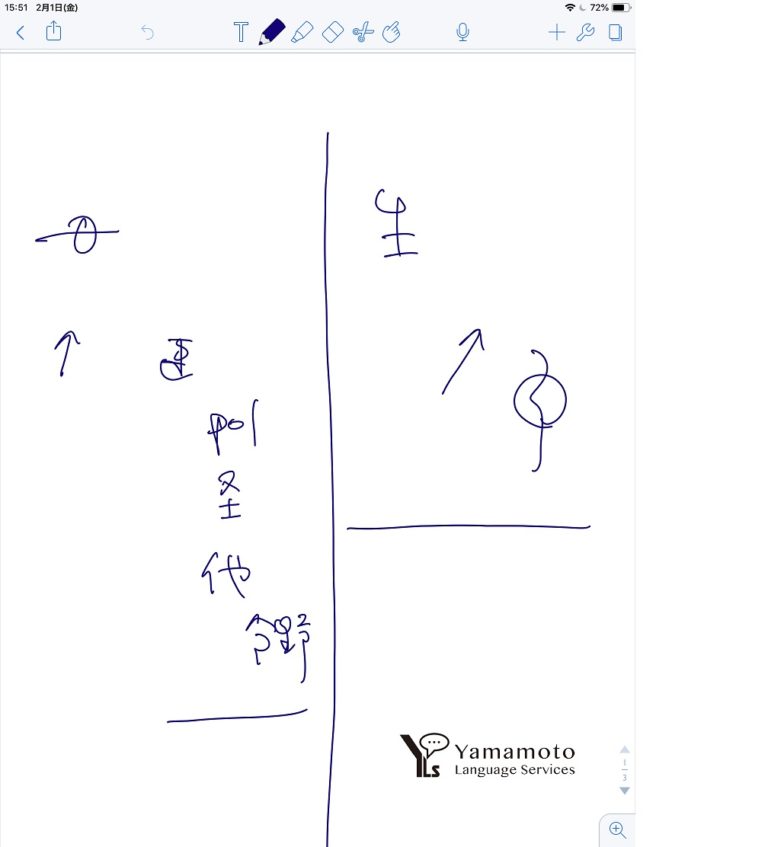There is one thing in common that many of my clients tell me after the meeting: “The way you take your notes with smiley faces, and how you cross your notes out after you’ve interpreted was very interesting.” In fact, some clients even admitted that they had to make a particular effort to focus on what was going on in the meeting rather than watching me take notes.
In this blog post, I will talk about note-taking in interpreting; in particular, in consecutive interpreting where the speaker speaks for a certain amount of time, usually two or three sentences, then pauses for the interpreter to render what was said in the other language. Once it’s done, the speaker resumes his/her speech for another portion.
If you have never seen an interpreter take notes, please watch this YouTube clip from 0:36 to 1:00. It is a sample of consecutive interpretation from English to Japanese.
(In case you’re interested, the photo below is my version of notes taken for the English sentences in the YouTube clip.)

When I take notes, it is a mixture of some words, signs like smiley faces and Chinese characters. Notes serve as a trigger to remember what has been said. Interpreters’ notes aren’t a transcript of the proceedings: interpreters use them only to support short-term memory and they don’t have to be legible to anyone else. I use symbols for unique meanings that I personally assign. Sometimes, if the speaker has said something and I understood it, but time doesn’t allow me to take notes, I may leave some space in my notes just to remember that there is a sentence there. When I reach that space in my delivery, I can interpret that part.
When I take notes, I use either an A4 sheet of paper or my 10.5” iPad Pro. In case of real paper, I divide it up into three vertical parts by folding vertically. Using the paper in a vertical manner means I have to take notes vertically rather than horizontally. This approach makes the move of eye sight more efficient because it has only a short distance to travel.
Also, I make sure to insert a horizontal line to mark the end of a sentence. When I have finished translating that sentence, I cross it out so that I don’t come back and repeat the same sentence again.
Interpreting is about allocating my intellectual resources to multiple tasks at the same time: listening, remembering what is said, speaking, and picking up on non-verbal cues. Note-taking allows me to focus on what the speaker is saying, not on remembering every word!
